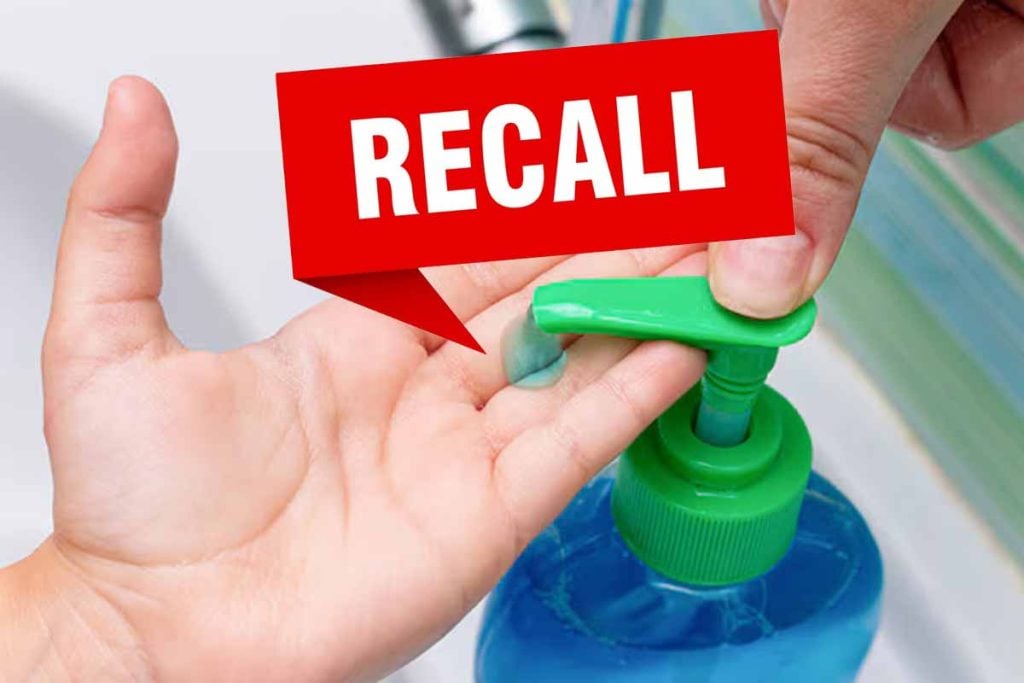Something unusual is unfolding across aisles that millions pass every day. A growing wave of concern now surrounds familiar personal-care shelves, where ordinary routines suddenly feel uncertain. The expansion of a major soap recall has drawn attention far beyond its initial scope, hinting at broader safety questions that no one saw coming. From bathroom essentials to beauty staples, the story behind this alert invites vigilance—and a closer look at what may lie hidden in products we trust daily.
Why the expanded soap recall matters for everyday hygiene
DermaRite launched the recall back in July. They expanded it later as a precaution. The concern? Possible contamination with Burkholderia cepacia complex. This stubborn bacterium thrives in wet conditions. Exposure carries real health risks, especially in medical or care settings. The recalled products are everyday essentials. Think deodorant, lotions, shampoo, body wash, and hand sanitizer. This matters for hospitals and regular shoppers alike. Distribution was nationwide, including Puerto Rico.
The company cautioned that even healthy individuals with small skin cuts or scrapes could develop localized infections. People with weakened immune systems face much higher danger. Once it gets into the bloodstream, the situation can turn serious quickly. The infection may trigger life-threatening sepsis. The CDC flags some key warning signs for at-risk patients. Watch for fever, exhaustion, and trouble breathing.
Because the catalog spans daily essentials, vigilance is urgent. Stop using any affected item at once. Check facility carts, patient rooms, and supply closets. Discard recalled products per site policy. Report symptoms to a clinician quickly. Replace affected soap or sanitizer with safe stock and document actions for compliance.
How contamination spreads and why it’s risky
Burkholderia cepacia complex can persist in moist environments and survive some preservatives. It can colonize water systems, dispensers, and caps. Once present, it risks spreading through touch, shared bottles, or refill practices. That is why multi-use containers need careful control and why single-use options help.
Symptoms differ from person to person. Healthy people might see redness, swelling, or pain where contact occurred. Those with compromised immunity can get much sicker. Fever and exhaustion may kick in first. These can then develop into respiratory infections. Clinicians watch closely for sepsis. Because early signs mimic common bugs, product history matters for diagnosis and treatment.
Facilities should isolate suspect stock and log lot details, then brief staff. Clean storage bins and trays. Use closed-pump dispensers and avoid refilling old bottles. Keep hand hygiene strong, yet do not rely on recalled soap or sanitizer. Document vendor notifications so audits confirm swift, traceable action.
Full list of affected soap and personal care lines
According to DermaRite, the expanded list adds these products: 3-N-1, 4-N-1, Clean-N-Free, DermaCerin, DemaDaily, DermaFungal, DemaKlenz, DermaMed, DermaRain, DermaSyn. It continues with DermaVantage, DermaVera, Gel Rite, Hand E Foam, Lantiseptic, LubriSilk, PeriFresh, and PeriGuard.
The expansion also includes Renew Hair and Body Wash, Renew Dimethicone, Renew Full Body Wash & Shampoo, Renew Periprotect, and Renew Skin Repair. Added too are San-E-Foam, TotalBath, TotalFoam, UltraSure, and WhirlBath. The company’s update brings the expansion to 28 items.
These additions follow the July action and sit alongside the initial four. Counting the original recall plus the expanded list brings the total above 30, per the company. Keep any affected soap, cleanser, or sanitizer out of use. Destroy them in line with your facility’s process.
Original recall, timeline, and distribution notes
The first wave named DermaKleen, DermaSarra, KleenFoam, and PeriGiene. Those items remain under recall. Facilities that pulled those four should recheck storage, because the list now spans much more. The recall began in July and later expanded as safety concerns grew.
Distribution reached the entire United States, including Puerto Rico. That scope means hospitals, nursing homes, clinics, and households could hold affected stock. Because movement across supply chains is complex, site leaders should audit all wards. Keep a dated record of actions and keep replacement products locked and labeled.
The company guidance is direct. Examine inventory immediately and destroy affected products per the facility’s process. Do not recycle bottles or decant liquids. Update purchasing controls to block new orders. When staff ask what to use instead, choose verified alternatives while ensuring all soap dispensers remain sealed and clean.
What to do next and how to lower your risk
If you used a recalled item and feel unwell, contact a physician. Report recent product use, since that detail aids testing and treatment. Mention fever, fatigue, or breathing changes, especially if your immune system is compromised. Seek care fast if symptoms escalate or persist.
For administrators and distributors, isolate stock and notify teams. Tag bins, wheel carts to a quarantine area, and document disposal. Clean racks and caddies. Audit vendor credits. Keep signage clear at the point of care so frontline staff do not grab recalled items during busy shifts.
After removal, improve controls. Purchase smaller formats where possible. Avoid open refills. Train staff to scan labels before use. Rotate inventory, track lots, and keep a recall playbook handy. Replace affected soap and related items with compliant options, then revisit protocols to prevent repeat exposure.
A clear path to protect daily routines while acting fast on alerts
This recall touches everyday routines and critical care. Risks differ by health status, yet the action plan is the same: stop use, isolate stock, and seek medical guidance if symptoms appear. Because DermaRite’s list now exceeds 30 items, treat any questionable soap or companion product as off-limits until confirmed safe.
